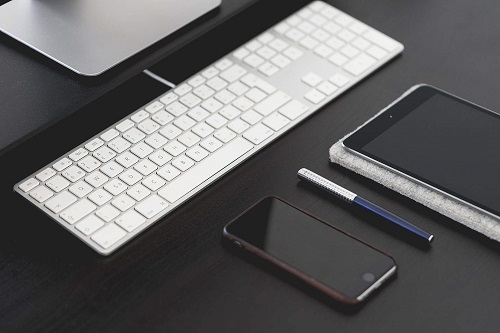The future of smartphone technology is coming. Maybe. Possibly. Hopefully.
For years, Samsung has been talking about releasing a foldable smartphone, where the glass (or whatever material) itself is actually bendable. In fact, the company originally talked about releasing their first foldable phone model in 2015.
Over the years, we’ve seen patents, prototypes, and a whole lot of rumors.
And while there’s been a whole lot of talk, there’s been a lot less action.
Well, Samsung seems to be finally taking the leap. CEO of Samsung’s mobile division DJ Koh recently announced that the Galaxy X will launch later this year.
Note: ZTE has already released one Android bendable phone that falls under the “folding” category. However, the product contains two separate displays that fold in the middle. The screen itself doesn’t fold. So it essentially looks like two thin phones attached by a swiveling hinge (in our opinion, that doesn’t really count).
So, How Do These Smartphones Work?
Over the years, many patents have been filed that address this technology. This has led to much speculation on who would be the first to market. It appears that Samsung will likely win the race – with the “Samsung Galaxy X”.
Without getting too technical, the phones will likely look like small tablets that fold right down the middle. So you would have two modes: smartphone mode and tablet mode.
It’s unclear how large these phones will be, but we estimate somewhere between 7 and 9 inches. An 8 inch screen that folds down the middle is a likely scenario.
In the end, the idea is that a bendable phone is a smartphone that doubles as a small tablet.
This intriguing innovation could change the game in a few ways.
 The Future of Foldable Phones
The Future of Foldable Phones
As we’ve seen over the past couple decades, smartphones continue to get better. Faster processors, more memory and storage, and cameras that take super-sharp images have made things progressively better.
Think about it. How often do you see someone snapping shots with a digital camera? It’s a rare occurrence. And when we do see it, it looks, well, unnatural.
All that being said, major enhancements can be somewhat slow, with exception to things like front cameras. This made the ability to take a selfie much easier, and allowed us to make face-to-face phone calls.
Then there’s smart home technology. This is making smartphones even smarter.
A folding display might make a similar impact. Except a lot more. One of those giant leap forwards that alters our lives in many ways.
Below are three ways how.
1. Two Displays
Dual-monitor display setups (or even more) are common in the computer world. You can be using one display to write a a Word document while glancing to another display to browse the web. This is a quality of life improvement that for many working professionals it’s hard to live without.
Bendable displays could bring similar multi-tasking advantages. Think about what you could do. You could pin a particular app to one side of the screen, and open a new one on the other side.
2. Better Cameras
For many users, the camera aspect of a smartphone is the most important feature. This has put immense pressure on manufacturers to make phones that take incredibly sharp cameras with high resolution.
The challenge is including both a front and rear camera that is super high quality. You’ll find the rear camera takes noticeably better pictures and significantly better video than the front-facing camera (which you would use for selfies and video calls). A foldable phone would eliminate this problem, as only one camera would be needed.
3. Killing the Tablet
Foldable phones might be the final nail in the coffin for tablets. Fewer and fewer people are rushing out to buy a tablet. Why?
Larger smartphone screens make tablets less desirable to some people. Hybrid laptops have completely eliminated the need for a tablet. Just bend the display around or detach it from the keyboard and you have something that’s no different from an iPad (with exception to the OS). Bendable phones could eliminate tablets altogether.
After all, if your phone folds out into a tablet, why have an additional device?
The bendable phone race is all quite interesting. There are so many amazing capabilities that are potentially in the works – along with countless benefits that haven’t yet been thought up.
Which ends with an interesting, and somewhat comical, question…
Who would have thought that we might be reverting to the “cellphone” design standard from the year 2000…
That’s right, the return of the almighty flip phone.
